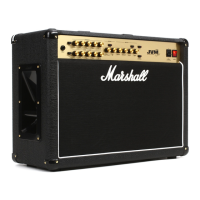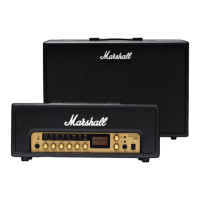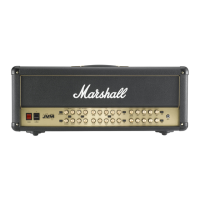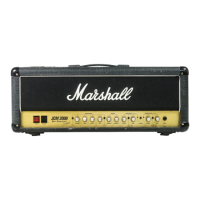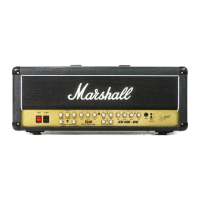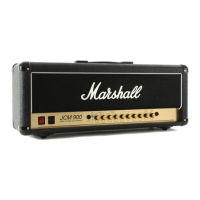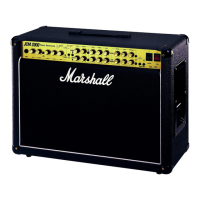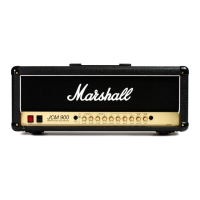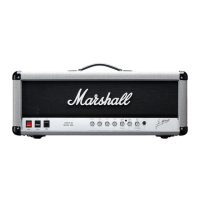ENGLISH
Note: the JVM only accepts incoming data and
it is not able to send any MIDI commands.
4. MIDI IN
Connect any external MIDI equipment to the
MIDI In DIN socket.
3. MIDI THRU
A copy of the signal from the MIDI In connector
is available on the MIDI thru socket to allow
daisy chaining of MIDI equipment.
STORING MIDI PRE-SETS
Pressing the ‘Footswitch/MIDI program’ switch
twice puts the amp in MIDI waiting mode.
The indicator light will ash until a valid MIDI
program change command is received.
When the MIDI program is changed and the
command is sent, the amp stores the current
status (Channel + FX + Reverb + Master
Settings) in the MIDI program number
received. It is possible to store up to 128
different MIDI pre-sets.
To exit this status without waiting for incoming
MIDI data press the ‘Footswitch/MIDI
program’ switch again.
Note: by default, the amp is congured to listen
to MIDI channel #1 but it can be changed to
listen to any of the 16 MIDI channels as follows:
1. Switch off both the standby switch and
power switch.
2. Press and hold the footswitch/MIDI
program switch and switch the power
switch on.
3. Release the footswitch/MIDI program
switch. The LED will start to ash.
4. Send any MIDI command using your MIDI
pedalboard or any other MIDI equipment.
The amp will detect which channel came
in and congure itself to listen to that
MIDI channel only. From now on any
MIDI pre-set you had previously stored
will be activated only on the new channel
regardless of what channel you used
before. This allows a fast reconguration
should there be a MIDI conict with any
other outboard equipment.
If you want to exit the MIDI channel selection
without any action press the footswitch/MIDI
program switch while waiting for MIDI data.
5.0
MIDI OPERATION
MIDI IMPLEMENTATION CHART
MANUFACTURER: MARSHALL MODEL: JVM VERSION 1.0 DATE: 02-05-2018
TRANSMITTED RECOGNISED REMARKS
1. BASIC INFORMATION
MIDI CHANNELS N Y (1-16) DEFAULT RECEIVE CHANNEL 1
NOTE NUMBERS N N
PROGRAM CHANGE N Y (0-127) PRESET RECALL
BANK SELECT RESPONSE N
MODES SUPPORTED:
MODE 1: OMNI-ON, POLY N
MODE 2: OMNI-ON, MONO N
MODE 3: OMNI-OFF, POLY N
MODE 4: OMNI-OFF, MONO N
MULTI MODE N
NOTE-ON VELOCITY N N
NOTE-OFF VELOCITY N N
UNIVERSAL SYSTEM EXLUSIVE N N
MANUFACTURER SYSTEM
EXCLUSIVE
N N
2. MIDI TIMING AND SYNCHRONIZATION
MIDI CLOCK N N
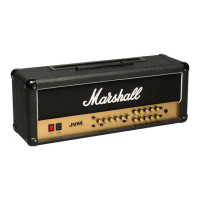
